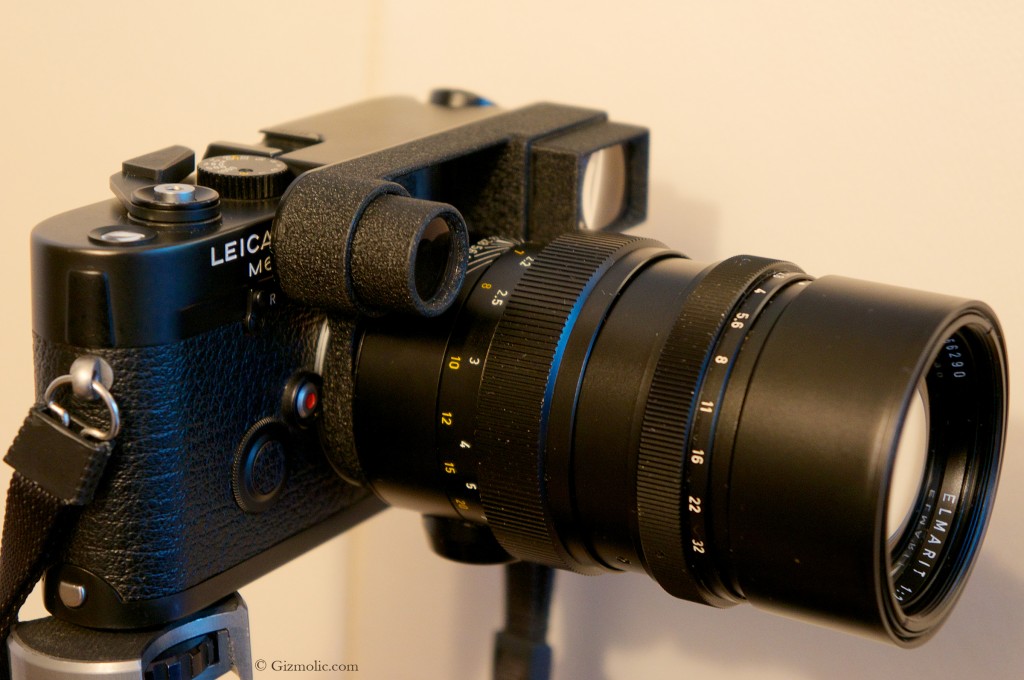Remember when we were kids and there was that girl with the thick black rimmed glasses, that we didn’t think much of? She wore plain cloths and shoes and wasn’t the glam chat popular around either. Sometimes she even, … ehrrrr, what was I going to talk about anyyway? Then, years later you see her again, and you go: hmmmmh….?
The Leica Elmarit-M 135mm f/2.8 with its funny goggle glasses is much the same. This is not the only Leica lens with goggles. Remember the $20000 LEICA 35mm SUMMILUX F1.4 with its goggles? It is true that this 135mm lens was never much loved, but it is hell of a lens for the price you can get one nowadays. Sure, it is not the best lens Leica has ever come up with, and yes, it may not be true to Oskar Barnack’s (who invented 35mm cameras & Leica) vision of what Leica stood for (sharp, light, and SMALL), but it sure isn’t the worst 135mm f/2.8 bit of bright glass you can put in front of your Leica M mount, or any Mirrorless modern camera. I use the Metabones adapter on the Sony NEX with great results.
Couple of negatives other than the odd filter screw size up front: Yes, the goggles look goofy when on an NEX, but do serve their purpose on M Rangefinders by correcting the viewfinder scale and vision. That really is not an issue for me. I do however find the images both on the M body and on the NEX a little washed off in colors, or contrast in case of black and white films. Almost as if there is a light leaking in. It isn’t thought. It is partly because the lens is brighter than you’d expect. Nothing that can’t be fixed with a bit of saturation and vibrancy setting in a photo correction package. Most of the historic nags are around the size and weight of the lens. Fair enough. It’s a big lens compared to most Rangefinder lenses that are almost always significantly smaller than SLR lenses, but it is still smaller than most equivalent SLR lenses that people (including me) happily log around in their bag all day long.
There are alternative 135mm’s of course. In addition to many Non Leica lenses like the m39 screw mount Jupiter-11, there is the older but darker Elmar f/4, the older middle of the road Hektor f/4.5, and perhaps the most thought-after; LEICA TELE-ELMAR-M 135mm f/4, which is still older, but lacks the controversies and some of the idiosyncrasies of Elmarit M. This lens now has a newer f/3.4 ver. with a catchy memorable name, called the Leica APO-Telyt-M f/3.4.
If you ever come across tests comparing these lenses at “Wide Open”, do remember you are NOT comparing apples with apples. A fairer test would be to set them all at their lowest common denominator which is f/4 (f/4.5 is close enough) and do the test. I wager a bet that the results will be pretty close, if not slightly in favor of Elmarit M. Certainly, at f.5.6.
Images are super sharp. Focusing is smooth and feels like an aphrodisiac! Min. focusing distance is 1.5 meters that is normal for this length of lens.The f stops click like a Swiss watch and have a range that is quite remarkable too. f/2.8, all the way to f/32! Compare that to the much loved Leica Summicron M 90mm f2, which goes from f/2 to f/16. Both lenses are made in Canada, but feel pretty solid. As a tangent, I have terrible calibration problems with the Summicron 90mm f/2 and no other lens on my Leica M6.
The Elmarit has a cool inbuild double sliding hood that extends and collapses around the front and is pretty effective.
Based on my measurements; it is exactly 12cm = 4.7inch long, and weighs in at 775g = 1lb, 11oz, 66mm body Diameter, and an odd 55mm filter thread that doesn’t quite match the rest of the 55mm’s.
The lens was manufactured between 1976 to 1996, with 5 elements in 4 groups and with Serial numbers 26xxxx to 27xxxx.
Depending on the condition, good examples can be had for anywhere between, $250 to $500, used. This is a Leica piece of glass and really about the end of the limit of size you can have on a rangefinder. Anything higher than 135mm, you really should think of an SLR or a larger mirrorless, nowadays.
While, I wouldn’t suggest you drop the shopping bag and rush to buy one of these, I would say, for an average of $300 ~ $400 in good conditions, you can put a lot worse lenses on your rangefinder or mirrorless. Above all, it is a unique and fun lens.
How do you rate this product?


